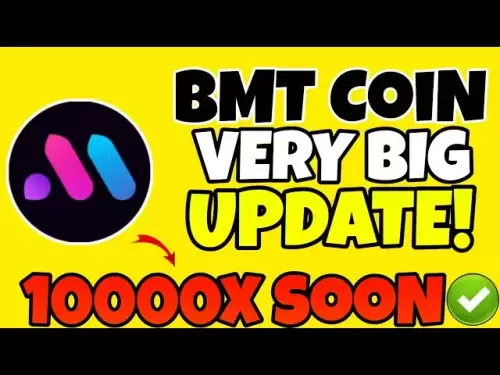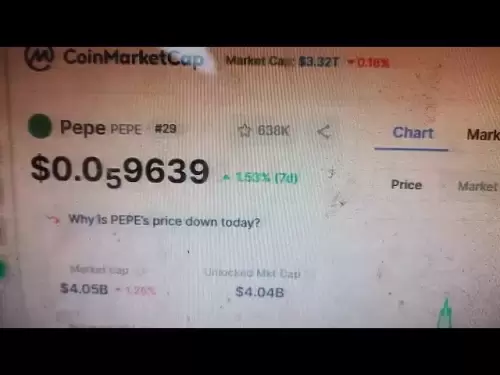-
 Bitcoin
Bitcoin $108,250.0992
0.11% -
 Ethereum
Ethereum $2,515.9404
0.03% -
 Tether USDt
Tether USDt $1.0003
0.00% -
 XRP
XRP $2.2166
-0.19% -
 BNB
BNB $656.5904
0.29% -
 Solana
Solana $147.4122
-0.58% -
 USDC
USDC $1.0000
-0.01% -
 TRON
TRON $0.2830
0.06% -
 Dogecoin
Dogecoin $0.1641
0.27% -
 Cardano
Cardano $0.5739
-0.19% -
 Hyperliquid
Hyperliquid $39.1463
-0.11% -
 Sui
Sui $2.8882
-0.02% -
 Bitcoin Cash
Bitcoin Cash $487.6428
0.31% -
 Chainlink
Chainlink $13.2097
0.07% -
 UNUS SED LEO
UNUS SED LEO $9.0308
0.10% -
 Avalanche
Avalanche $17.8608
0.13% -
 Stellar
Stellar $0.2379
-0.06% -
 Toncoin
Toncoin $2.7400
-0.39% -
 Shiba Inu
Shiba Inu $0.0...01144
-0.36% -
 Litecoin
Litecoin $87.5467
0.66% -
 Hedera
Hedera $0.1538
0.22% -
 Monero
Monero $315.5479
0.36% -
 Dai
Dai $1.0000
0.00% -
 Polkadot
Polkadot $3.3523
-0.71% -
 Ethena USDe
Ethena USDe $1.0003
0.01% -
 Bitget Token
Bitget Token $4.3960
-1.03% -
 Uniswap
Uniswap $7.2663
4.19% -
 Aave
Aave $272.8619
2.04% -
 Pepe
Pepe $0.0...09676
-0.18% -
 Pi
Pi $0.4586
-2.87%
How is the forced liquidation price of Coinbase positions determined?
Forced liquidation on Coinbase occurs when a position's value drops below the maintenance margin, triggering automatic closure to prevent further losses.
Apr 10, 2025 at 05:35 pm
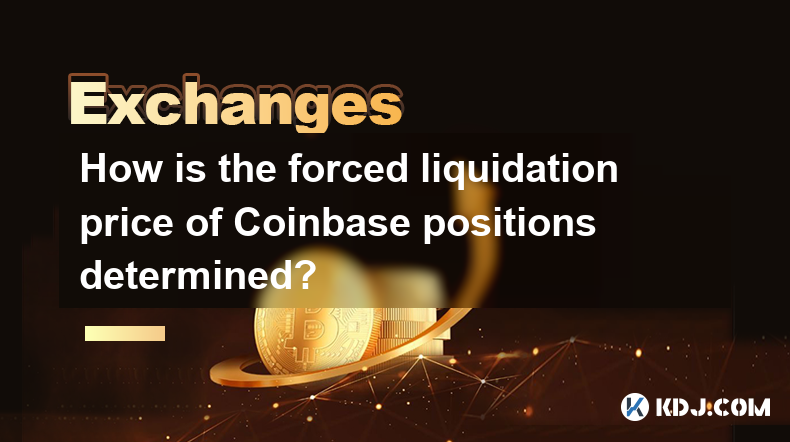
The forced liquidation price of positions on Coinbase is a critical aspect of trading, particularly for those involved in margin trading and futures contracts. Understanding how this price is determined can help traders manage their risks more effectively. In this article, we will delve into the mechanics behind the calculation of the forced liquidation price on Coinbase, exploring the factors that influence it and the steps traders can take to avoid liquidation.
Understanding Margin Trading and Futures on Coinbase
Margin trading and futures contracts allow traders to leverage their positions, potentially increasing their profits but also their risks. When a trader uses leverage, they are essentially borrowing funds to increase their trading power. This can lead to significant gains if the market moves in their favor, but it also means that losses can be amplified. To mitigate the risk of default, exchanges like Coinbase implement a forced liquidation mechanism.
What is Forced Liquidation?
Forced liquidation occurs when the value of a trader's position falls below a certain threshold, known as the maintenance margin. At this point, the exchange will automatically close the position to prevent further losses. The forced liquidation price is the price at which this action is triggered. It is designed to protect both the trader and the exchange from excessive losses.
Factors Influencing the Forced Liquidation Price
Several factors influence the forced liquidation price on Coinbase. These include:
- Leverage Ratio: The amount of leverage used in the trade directly affects the liquidation price. Higher leverage means a smaller price movement can trigger liquidation.
- Initial Margin: The amount of capital a trader must deposit to open a leveraged position. A higher initial margin can provide a buffer against liquidation.
- Maintenance Margin: The minimum amount of equity that must be maintained in the account. If the account balance falls below this level, liquidation is triggered.
- Market Volatility: High volatility can lead to rapid price movements, increasing the likelihood of liquidation.
Calculating the Forced Liquidation Price
The forced liquidation price is calculated based on the following formula:
[ \text{Forced Liquidation Price} = \frac{\text{Entry Price} \times (1 - \text{Maintenance Margin Ratio}) \times \text{Leverage}}{1 + (\text{Entry Price} \times \text{Leverage} \times \text{Maintenance Margin Ratio})} ]
Let's break down this formula:
- Entry Price: The price at which the position was opened.
- Maintenance Margin Ratio: The percentage of the position's value that must be maintained as equity.
- Leverage: The amount of leverage used in the trade.
For example, if a trader opens a long position at an entry price of $10,000 with a leverage of 10x and a maintenance margin ratio of 0.5%, the forced liquidation price would be calculated as follows:
[ \text{Forced Liquidation Price} = \frac{10000 \times (1 - 0.005) \times 10}{1 + (10000 \times 10 \times 0.005)} = \frac{10000 \times 0.995 \times 10}{1 + 500} = \frac{99500}{600} \approx 165.83 ]
In this case, if the price of the asset falls to $165.83, the position will be liquidated.
How to Avoid Forced Liquidation
Traders can take several steps to avoid forced liquidation:
- Monitor Positions Closely: Regularly check the value of your positions and the market conditions. Use stop-loss orders to limit potential losses.
- Adjust Leverage: Consider reducing the leverage used in your trades. Lower leverage can provide a larger buffer before reaching the liquidation price.
- Add More Margin: If the market moves against your position, you can add more funds to your account to meet the maintenance margin requirements.
- Diversify: Spreading your investments across different assets can reduce the risk of a single position triggering liquidation.
Practical Example of Forced Liquidation on Coinbase
To illustrate how forced liquidation works on Coinbase, let's consider a practical example:
- Scenario: A trader opens a long position on Bitcoin with an entry price of $50,000, using 5x leverage. The maintenance margin ratio is set at 1%.
- Calculation: Using the formula provided earlier, the forced liquidation price would be:
[ \text{Forced Liquidation Price} = \frac{50000 \times (1 - 0.01) \times 5}{1 + (50000 \times 5 \times 0.01)} = \frac{50000 \times 0.99 \times 5}{1 + 2500} = \frac{247500}{2501} \approx 98.96 ]
- Outcome: If the price of Bitcoin falls to $98.96, the position will be liquidated. The trader must monitor the market closely and take action if the price approaches this level.
Frequently Asked Questions
Q: Can the forced liquidation price change after a position is opened?
A: Yes, the forced liquidation price can change if the trader adjusts their leverage or adds more margin to their account. Additionally, changes in market conditions and volatility can indirectly affect the liquidation price by influencing the maintenance margin requirements.
Q: What happens to the funds after a position is liquidated?
A: After a position is liquidated, any remaining funds in the account after covering the losses and fees are returned to the trader. If the losses exceed the available funds, the trader may owe money to the exchange.
Q: Is there a way to predict when a position might be liquidated?
A: While it's not possible to predict market movements with certainty, traders can use tools like liquidation calculators and real-time margin monitoring to estimate when their positions might be at risk of liquidation. Keeping an eye on market trends and setting appropriate stop-loss orders can also help manage this risk.
Q: Can I reopen a position after it has been liquidated?
A: Yes, after a position is liquidated, you can reopen a new position if you have sufficient funds in your account. However, it's important to reassess your trading strategy and risk management practices to avoid repeated liquidations.
Disclaimer:info@kdj.com
The information provided is not trading advice. kdj.com does not assume any responsibility for any investments made based on the information provided in this article. Cryptocurrencies are highly volatile and it is highly recommended that you invest with caution after thorough research!
If you believe that the content used on this website infringes your copyright, please contact us immediately (info@kdj.com) and we will delete it promptly.
- Litecoin Breakout Watch: What Traders Need to Know Now
- 2025-07-06 16:50:13
- Bitcoin, Solana, Ethereum: Decoding the Latest Buzz on the Blockchain
- 2025-07-06 16:50:13
- Widnes Resident's 50p Could Be Your Ticket to Easy Street: Rare Coin Mania!
- 2025-07-06 16:55:13
- Bitcoin, Solaris Presale, and Token Rewards: What's the Buzz?
- 2025-07-06 16:55:13
- Ethereum Under Pressure: Price Drop Amid Global Uncertainties
- 2025-07-06 17:00:13
- XRP, SEC Case, and Prosperity: A New Era for XRP Holders?
- 2025-07-06 17:10:13
Related knowledge
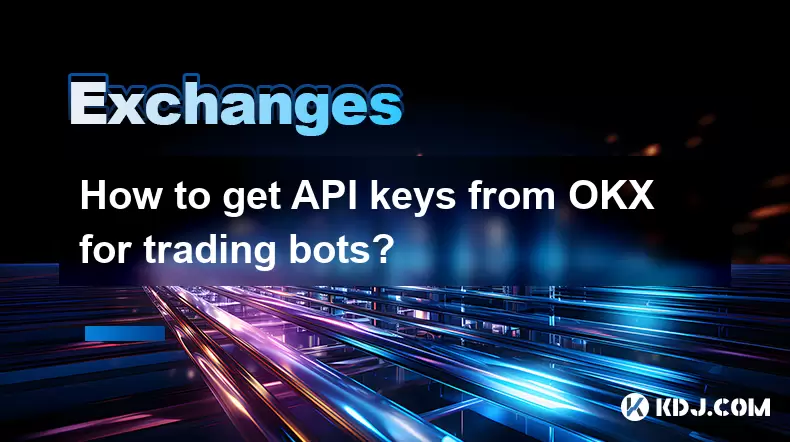
How to get API keys from OKX for trading bots?
Jul 03,2025 at 07:07am
Understanding API Keys on OKXTo interact with the OKX exchange programmatically, especially for building or running trading bots, you need to obtain an API key. An API (Application Programming Interface) key acts as a secure token that allows your bot to communicate with the exchange's servers. On OKX, these keys come with customizable permissions such ...
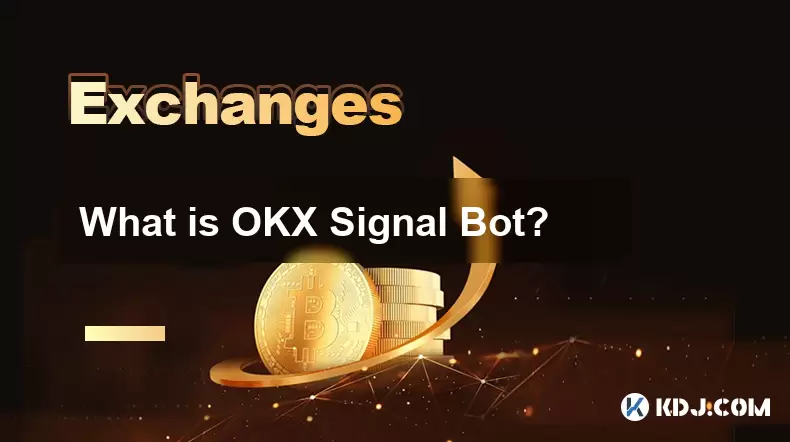
What is OKX Signal Bot?
Jul 02,2025 at 11:01pm
Understanding the Basics of OKX Signal BotThe OKX Signal Bot is a feature within the OKX ecosystem that provides users with automated trading signals and execution capabilities. Designed for both novice and experienced traders, this bot helps identify potential trading opportunities by analyzing market trends, technical indicators, and historical data. ...
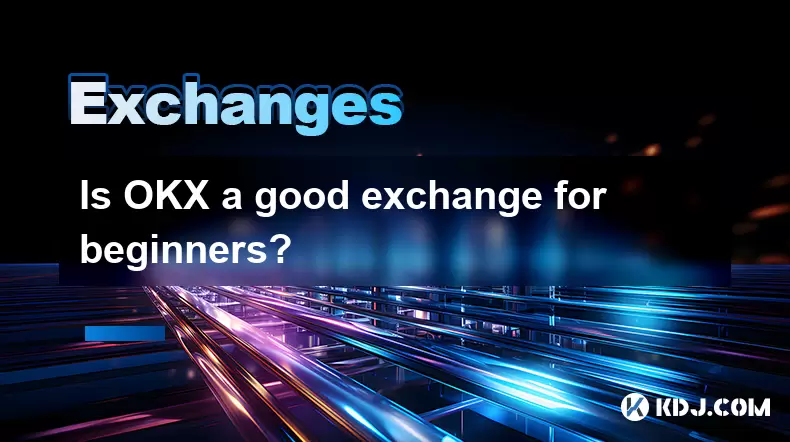
Is OKX a good exchange for beginners?
Jul 03,2025 at 05:00pm
What Is OKX and Why Is It Popular?OKX is one of the leading cryptocurrency exchanges globally, known for its robust trading infrastructure and a wide variety of digital assets available for trading. It supports over 300 cryptocurrencies, including major ones like Bitcoin (BTC), Ethereum (ETH), and Solana (SOL). The platform has gained popularity not onl...
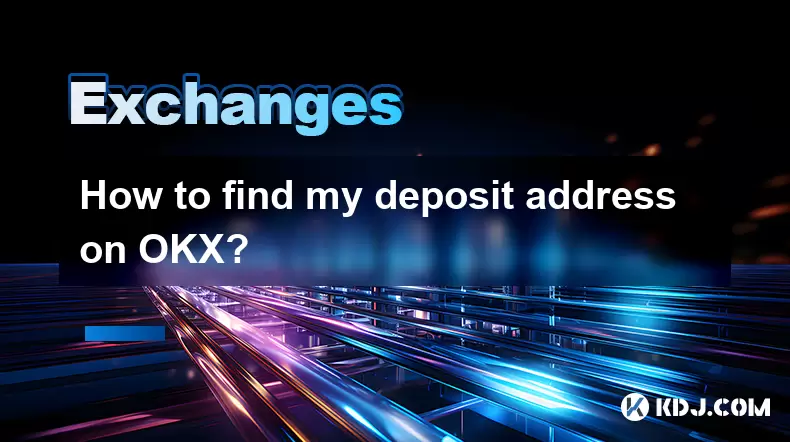
How to find my deposit address on OKX?
Jul 06,2025 at 02:28am
What is a Deposit Address on OKX?A deposit address on OKX is a unique alphanumeric identifier that allows users to receive cryptocurrencies into their OKX wallet. Each cryptocurrency has its own distinct deposit address, and using the correct one is crucial to ensure funds are received properly. If you're looking to transfer digital assets from another ...

Can I use a credit card to buy crypto on OKX?
Jul 04,2025 at 04:28am
Understanding OKX and Credit Card PaymentsOKX is one of the leading cryptocurrency exchanges globally, offering a wide range of services including spot trading, derivatives, staking, and more. Users often wonder whether they can use a credit card to buy crypto on OKX, especially if they are new to the platform or looking for quick ways to enter the mark...
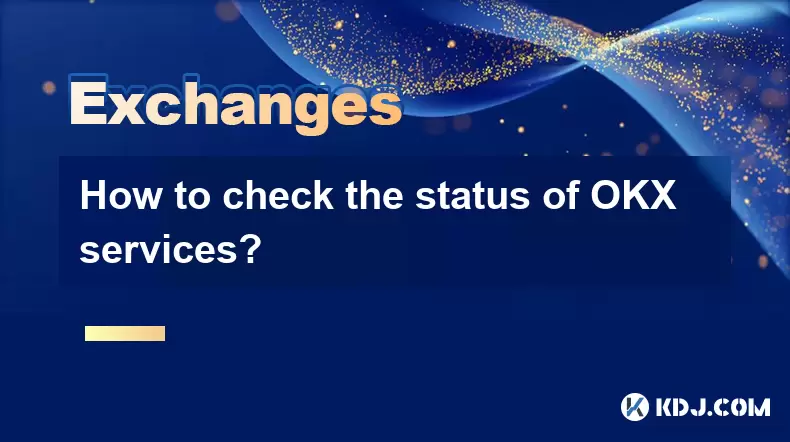
How to check the status of OKX services?
Jul 02,2025 at 11:14pm
What is OKX, and Why Checking Service Status Matters?OKX is one of the world’s leading cryptocurrency exchanges, offering services such as spot trading, futures trading, staking, and more. With millions of users relying on its platform for daily transactions, it's crucial to know how to check the status of OKX services. Downtime or maintenance can affec...

How to get API keys from OKX for trading bots?
Jul 03,2025 at 07:07am
Understanding API Keys on OKXTo interact with the OKX exchange programmatically, especially for building or running trading bots, you need to obtain an API key. An API (Application Programming Interface) key acts as a secure token that allows your bot to communicate with the exchange's servers. On OKX, these keys come with customizable permissions such ...

What is OKX Signal Bot?
Jul 02,2025 at 11:01pm
Understanding the Basics of OKX Signal BotThe OKX Signal Bot is a feature within the OKX ecosystem that provides users with automated trading signals and execution capabilities. Designed for both novice and experienced traders, this bot helps identify potential trading opportunities by analyzing market trends, technical indicators, and historical data. ...

Is OKX a good exchange for beginners?
Jul 03,2025 at 05:00pm
What Is OKX and Why Is It Popular?OKX is one of the leading cryptocurrency exchanges globally, known for its robust trading infrastructure and a wide variety of digital assets available for trading. It supports over 300 cryptocurrencies, including major ones like Bitcoin (BTC), Ethereum (ETH), and Solana (SOL). The platform has gained popularity not onl...

How to find my deposit address on OKX?
Jul 06,2025 at 02:28am
What is a Deposit Address on OKX?A deposit address on OKX is a unique alphanumeric identifier that allows users to receive cryptocurrencies into their OKX wallet. Each cryptocurrency has its own distinct deposit address, and using the correct one is crucial to ensure funds are received properly. If you're looking to transfer digital assets from another ...

Can I use a credit card to buy crypto on OKX?
Jul 04,2025 at 04:28am
Understanding OKX and Credit Card PaymentsOKX is one of the leading cryptocurrency exchanges globally, offering a wide range of services including spot trading, derivatives, staking, and more. Users often wonder whether they can use a credit card to buy crypto on OKX, especially if they are new to the platform or looking for quick ways to enter the mark...

How to check the status of OKX services?
Jul 02,2025 at 11:14pm
What is OKX, and Why Checking Service Status Matters?OKX is one of the world’s leading cryptocurrency exchanges, offering services such as spot trading, futures trading, staking, and more. With millions of users relying on its platform for daily transactions, it's crucial to know how to check the status of OKX services. Downtime or maintenance can affec...
See all articles





















